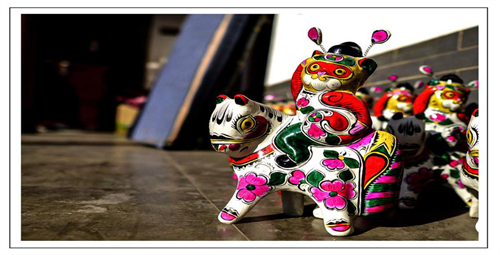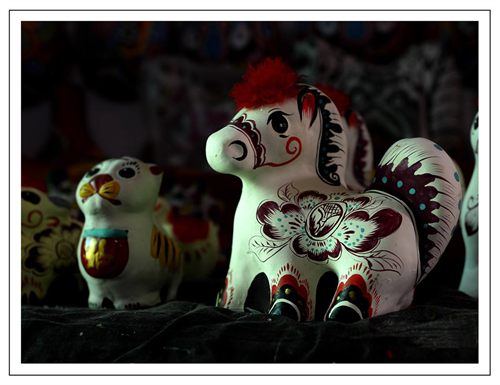Appreciation of Shaanxi Fengxiang Clay Sculpture

Fengxiang Clay Sculpture has been included in the list of the first national intangible cultural heritage. The Fengxiang County Annals reveals that pottery animals and figurines buried with the dead in the Spring and Autumn Period and the Warring States Period and the Han and Tang Dynasties have been unearthed within China and such pottery is similar to today’s clay sculpture. So, arts and crafts of clay sculpture can be dated back to 2,000-3,000 years ago. More than 600 years ago, clay sculpture was very popular in the Ming Dynasty.
Fengxiang Clay Sculpture has more than 170 assortments, from waist-high squat pottery tigers and tiger-faced hangings to little pottery rabbits and lions. Black clay soil, white powder, hide glue and other materials are used in the production. The mold is used to shape the clay sculpture. With sophisticated molding, gorgeous decoration, beautiful colors and lovely shapes, Fengxiang Clay Sculpture outshines many other types of folk clay sculpture in China.

Fengxiang Clay Sculpture is so plain in color and shape that many people, tourists in particular, give it to their relatives and friends as a gift. Especially the Chinese zodiac clay sculpture enjoys great popularity.

As the Spring Festival approaches each year, almost every family in Liuying Village, a demonstration base for the cultural industry in Shaanxi, is busy in making clay sculpture.
As the mascot Phoenix-tailed Rooster got unveiled at the Spring Festival Gala 2017 and its creator Hu Xinmin appeared at the CCTV Lantern Festival Show, Fengxiang Clay Sculpture and the works of art arouse wide attention in the society.


